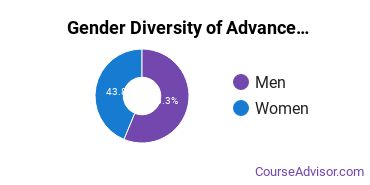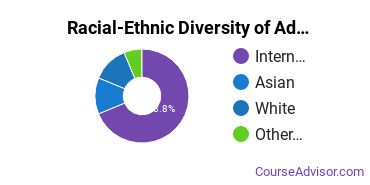Advanced Dentistry & Oral Sciences at University of Pennsylvania
Every advanced dentistry and oral sciences school has its own distinct culture and strengths. We've pulled together some statistics and other details to help you see how the dentistry and oral science program at University of Pennsylvania stacks up to those at other schools.UPenn is located in Philadelphia, Pennsylvania and has a total student population of 26,552.
Want to know more about the career opportunities in this field? Check out the Careers in Advanced Dentistry & Oral Sciences section at the bottom of this page.
Featured schools near , edit
UPenn Advanced Dentistry & Oral Sciences Degrees Available
- Master’s Degree in Dentistry & Oral Science
UPenn Advanced Dentistry & Oral Sciences Rankings
Dentistry & Oral Science Student Demographics at UPenn
Take a look at the following statistics related to the make-up of the dentistry and oral science majors at University of Pennsylvania.
UPenn Advanced Dentistry & Oral Sciences Master’s Program

The following table and chart show the race/ethnicity for students who recently graduated from University of Pennsylvania with a master's in dentistry and oral science.

| Race/Ethnicity | Number of Students |
|---|---|
| Asian | 2 |
| Black or African American | 0 |
| Hispanic or Latino | 0 |
| White | 2 |
| International Students | 11 |
| Other Races/Ethnicities | 1 |
Related Majors
- Health/Medical Prep Programs
- Medical Illustration & Informatics
- Other Health Professions
- Medical Science
- Bioethics/Medical Ethics
Careers That Dentistry & Oral Science Grads May Go Into
A degree in dentistry and oral science can lead to the following careers. Since job numbers and average salaries can vary by geographic location, we have only included the numbers for PA, the home state for University of Pennsylvania.
| Occupation | Jobs in PA | Average Salary in PA |
|---|---|---|
| Health Specialties Professors | 12,420 | $95,160 |
| Dentists | 3,540 | $153,950 |
| Oral and Maxillofacial Surgeons | 240 | $225,660 |
| Dentists | 130 | $103,180 |
References
*The racial-ethnic minorities count is calculated by taking the total number of students and subtracting white students, international students, and students whose race/ethnicity was unknown. This number is then divided by the total number of students at the school to obtain the racial-ethnic minorities percentage.
- College Factual
- National Center for Education Statistics
- O*NET Online
- Image Credit: By WestCoastivieS under License
More about our data sources and methodologies.
Featured Schools
 Request Info
Request Info
|
Southern New Hampshire University You have goals. Southern New Hampshire University can help you get there. Whether you need a bachelor's degree to get into a career or want a master's degree to move up in your current career, SNHU has an online program for you. Find your degree from over 200 online programs. Learn More > |
